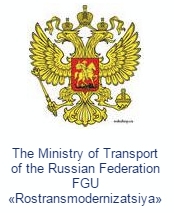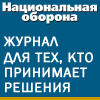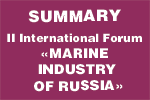International forum
“Marine Industry of Russia”
Moscow, “Gostiny Dvor”
Exhibition Hall,
May 16-18, 2012
Time left till opening of the Forum:
340 days 0 hours 26 minutes
Electronic catalogue
Search for the participant >>>
Enter the site >>>
Forum bulletin
NEWS of marine Forum
February 17, 2011
The crew of tanker “NS Century” owned by Novoship is reported by the Press Service of the shipping company to have defeated the armed attack in Indian Ocean.Sovcomflot tanker defeats armed attack in Indian Ocean
December 14, 2010
New Year special offer! Gift registration fee for participation in Forum till January 15!
October 12, 2010
“It is feasible to develop high-technology relying on domestic resources!”Interview with Lev S. Lazarev, Director General of “Muromsky Radiozavod
Eco-Friendly Ships of Tomorrow
August 14, 2010
25 years is standard duration of life of ocean ships: only in certain cases it exceeds this number. This implies that technologies and structural components of vessels being constructed today will be in use in 2035 and even later.
“Long life of vessels is the reason for us to focus efforts on reaching low CO2 emissions by 2020,” says Herman Klein, Chairman of the Executive Board of Germanischer Lloyd and of the International Association of Classification Societies (IACS).
At the 60th session of IMO’s Marine Environment Protection Committee, a proposition was made to concentrate attention on technical and organizational measures to reduce GHG emissions of newly-built and active ships. The Energy Efficiency Design Index (EEDI) is being elaborated for newly-built ships, while the Ship Energy Efficiency Management Plan (SEEMP), for all ships. To complete this work, the committee will have to decide on requirements for ship sizes, program implementation terms and emission reduction volumes.
The Working Group on EEDI and SEEMP is to report on the work done at the 61st session of the committee to be held in September 2010.
However, shipbuilders do not wait for EEDI adoption and already now search for ways to enhance hull shapes, study possibility of application of new materials, use of technologies and equipment in order to offset environmental hazard.
“Previously, production optimization was driving force for new ship projects. If the project met preset requirements, the construction began. Today, we speak about using new tools to optimize ships themselves,” says Herman Klein.
The optimization means reduction of flow resistance, enhancement of rooms, ballast tanks and propulsion devices. Usually, main engines are designed with a view to top performance of 100% of rated performance. Now they require re-designing to ensure effective operation at 10% of rated performance.
Carl-Henrik Björk, Cruise and Ferry VP at Wartsila Italia SpA, highlighted importance of computer modeling for hull shape optimization with a view of flow resistance reduction. Besides, he told on work propulsion system designers perform with regard to hazardous emission reduction,
“We seek to halve fuel consumption of our engines”. There is a direct relation between amount of fuel consumed and combustion gases.
In his interview to MarineLog, Herman Klein said,
“It is time to design new ship projects which are more effective, energy efficient and safe”.
Tor Svensen, President and CEO of Det Norske Veritas (DNV), agrees with him,
“We are aware that shipbuilding is in the doldrums now; however, it’s time to innovate and search for new solutions. DNV uses its technical and financial capabilities to solve problems of the industry. In the first instance it refers to environment protection”.
Recently DNV introduced a 6,200 TEU container ship of ‘baby post-Panamax’ class. Its name is Quantum. Selection of features of the new vessel features is based on market studies of AXA Alphaliner and Dynamar. The vessel is to navigate between Europe and the east coast of the South America.
The Quantum involves lots of innovative solutions: a wide 49 m deck increasing ship’s container capacity, extensive use of light composites, streamlined breakwater reducing wind drag, minimum ballast, dual fuel four-stroke engines (LNG and MGO) and Azipod propulsion device.
Pilot motors that move the vessel within harbor area — hazardous emissions control zone — are fed with LNG.
The Quantum concept uses solutions which have been in use in other industries for a long time. Thus, due to replacing steel with glass-fiber reinforced plastic in the superstructure, piping and hatch covers, the vessel weight has been reduced by 1,100 tons.
Earlier, SOLAS regulations prevented using inflammable materials for ship load-bearing structures; recent amendments allow composites, of course, if necessary safety precautions are met.
With 272.3 meter length, the Quantum was designed to run at 21 knots (standard speed for container ship is 24 knots); however, the ship is capable of operating efficiently at speed less than 10 knots and more than 22.
Svensen says, “‘Quantum’ is a concept designed, principally, to investigate the possibility of introducing innovations in the shipbuilding. It comprises lots of new technical solutions which are unlikely to appear in serial ships. However, I am sure that the industry will benefit from the experience we gained.
According to market research which anticipated work on the Quantum concept, ships of about 5,500 TEU will probably become standard “workhorses” in marine transportation”.
Incat Introduces Ecoship 130
Shipyards and ship owners also work on new eco-friendly ships. Incat Tasmania (Australia) has introduced Ecoship 130 — a high-speed wave-piercing catamaran for roll-on/roll-off service.
Designed by Revolution Design Pty Ltd. and classified by DNV, Ecoship 130 is capable of accelerating up to 39 knots. The vessel is equipped with four diesel MAN 20V 28/33D, each rated at 9,000 kW at 1,000 rpm.
The engines are optimized for low-sulphur fuel. According to Incat representatives, hull shape optimization and special coating has considerably reduced environmental resistance. With a view to passenger needs, the 1,700 DWT Ecoship 130 can be equipped with wind turbines, solar panels and HRS.
Stena Airmax
Stena Teknik, unit of Stena AB engaged in construction, refit and design of ships, has recently launched a large-scale prototype of an eco-ship in Goteborg, Sweden.
Stena Airmax — 15 meter long and 25 ton displacement model — uses air cushion technology thus reducing hull friction. In future, this technology will ensure reduction of fuel consumption and hazardous agent emissions at large tankers.
The prototype is equipped with an air regulation system which creates an air cushion in a cavity in the hull bottom.
One of the disadvantages related to this approach is that waves emerging in the cavity impair effectiveness of the cushion. Stena says that it managed to solve the problem by creating such an air pressure which reduces both friction and air leakage. The wide and flat bulbous bow ensures the most satisfactory water flow under the hull.
This prototype is 1:12 model. Actual size of the tanker is 182 m x 40 m.
In the basis of the project, there lie investigation of Stena Teknik has started five years ago. According to Ulf Ryder, President and CEO of Stena Bulk, previous tests were encouraging,
“Depending on the ship type and its speed, we may save 20 to 30% of energy. Now, these data are to be confirmed in the course of Stena Airmax prototype testing.
The P-MAXair project is implemented by Stena Teknik in cooperation with Chalmers University of Technology and SSPA.
Information is based on materials published by MarineLog
Read also:
- August 12, 2010 - Upgrade of Ship Power Plant Simulators
- August 12, 2010 - New Dynamic Positioning System Simulator Installed at Admiral Ushakov Maritime State Academy
- August 05, 2010 - MTN Provides Communication at Crystal Cruises Ships
- August 05, 2010 - Pedal-Powered Submarine
- August 05, 2010 - NPO Saturn Signed a Contract for Engineering of Marine Gas-Turbine Engines
© Marine Industry of Russia, 2009-2010. All rights reserved.
By: “Ideological buiseness-projects”
Design by Valentina Ivanova.









